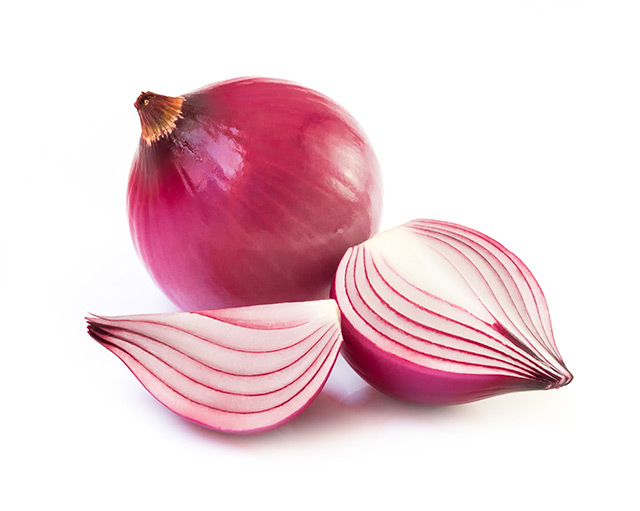Top 10 foods that help regulate blood sugar and prevent diabetes
09/09/2015 / By Greg White

Diabetes is a prevalent ailment to scourge society. It is a metabolic disorder that is caused by the inability of the pancreas to produce the hormone insulin. Insulin is required to metabolize the sugar levels in the blood. When insulin becomes deficient, sugar is retained in the blood, and this deficiency can lead to type 1 and 2 diabetes.
A misconception about diabetes is that it is a disease without a cure. Though that may be technically correct, the truth is that diabetes is a disease that is a product of culture rather than biology. All people need to do is regulate what foods they choose to eat. In order to reduce your risk of diabetes, try integrating these foods into your diet.
Green leafy vegetables
Green leafy vegetables, such as kale, spinach and broccoli, are a great dietary addition for people who are trying to cope with diabetes. These vegetables contain water-soluble vitamins B6 and C, and fat-soluble vitamins A and K. The vitamins are necessary for the proper metabolism of nutrients in the body. In addition, green leafy vegetables are known to have a low content of carbohydrates and cholesterol, both of which can help in the buildup of sugars in the bloodstream. Of all the green leafy vegetables, kale is the best due to its high content of calcium, magnesium, and bile acid sequestrants. These substances can significantly reduce high levels of bad cholesterol.
Beans
Beans rank high in the hierarchy of foods that can help prevent diabetes. Loaded with fiber, even a small amount of beans can make a person feel full. Reducing the amount of food (including carbohydrates) a person ingests causes the body to metabolize the reserves of blood sugar that are in excess, thereby reducing blood sugar levels. For diabetics who are looking for more protein, beans are a much better choice than other options, like processed red meat; unlike most beans, processed red meats have been linked to cancer. Furthermore, black beans are high in calcium, which plays a significant role in burning fat.
Strawberries
There is a common misconception that strawberries are too sweet for diabetics who are trying to reduce their blood sugar levels. However, the fact is that strawberries are low in calories, and high in fiber and water content. Therefore, people who snack on strawberries do not feel hungry soon after. This keeps people from consuming more active carbs, thus mitigating the need to remove them. If people eat less often, the body will use the reserves of nutrients more efficiently.
Oatmeal
Oatmeal is often misunderstood by diabetics because it contains carbohydrates. Although oatmeal contains carbs, it also contains a lot of fiber. A benefit of fiber is that it can make people feel fuller longer. Eating less can help diabetics manage their weight, which will enhance the body’s metabolism rate and help control blood sugar levels. In other words, oatmeal is a great way to feel fuller while eating less.
Barley
Barley is another strong contender to feature in a healthy eating chart for diabetics. These grains are high in beta-glucan, which is a soluble fiber. Eating barley can give a feeling of fullness and reduce overall dietary intake. In India, barley is used as a fasting food, meaning it is consumed so people won’t feel hungry for the rest of the day. Beta-glucan has other benefits too. It can reduce the overall cholesterol amount in the body, which can be another problem among diabetics.
Lean meats
Lean meats such as salmon, tuna, cod and chicken are a healthy option for people dealing with high blood sugar levels. This is primarily because of their high protein content, which helps build cell tissue. These meats also have healthy omega-3 fatty acids, which are instrumental in maintaining cardiac health. Since cardiac disorders, like heart attacks, are common among diabetics, omega-3 fatty acids are very beneficial. Another benefit of lean meats is that they contain chromium, which is a mineral that helps with the proper production of insulin. Always try to choose healthy, unprocessed meats, as processed meats have been linked to causing cancer.
Cinnamon
Cinnamon is a wonder-spice for diabetics. It metabolizes blood sugar in a similar way to how natural insulin does. This was attested by a German study where a group of diabetics were given a cinnamon extract and another group was given a placebo. The researchers found that people who were given cinnamon extract had a 10.3% drop in blood sugar levels, while the placebo group showed just a 3.4% drop. It is easy to incorporate cinnamon into your diet by sprinkling it on top of your morning oatmeal, adding it to smoothies or using it in a variety of different meals.
Almonds and other nuts
Almonds and other similar nuts have a low glycemic index, which directly translates to relatively low blood sugar levels. Almonds are often recommended by dietitians for people who are trying to manage their weight. A healthy dose of nuts can produce an anti-inflammatory effect on the body, which in turn can increase the production of insulin, which is often deficient in diabetics. Walnuts are also a great way to control blood sugar, since they are an ample source of omega-3 fatty acids.
Berries
Berries may seem like a strange choice on a healthy eating list for diabetics. Although most berries are naturally sweet, they also have a large amount of dietary fiber. Just one cup of blackberries has 7.6 grams of dietary fiber, while a similar quantity of blueberries has 3.5 grams. Due to this, people who eat berries once daily tend to eat fewer and smaller meals, which directly reduces their carbohydrate intake. Berries also help in coping with other vascular problems. A study conducted by the American Journal of Clinical Nutrition in 2008 showed that people who ate a bowlful of berries for eight weeks had a significant fall in their hypertension. Darker berries tend to be healthier than lighter berries, since the former contain more antioxidants than the latter.
Oranges
Oranges are a great source of vitamin C, which helps bolster the metabolic rate of the body. Vitamin C also aids in repairing worn-out cells, which makes the person feel rejuvenated despite eating less. The ample amounts of vitamin C can also help lower bad cholesterol and the risk for heart disease among diabetics. A medium-size organs contains about one-third of the daily recommended dose of vitamin C. Oranges are low in sugar in comparison to other fruits and can make a great side dish or juice at the breakfast table.
Diabetes is a disease to recently makes its way onto American dinner plates, meaning it is a choice rather than a genetic death sentence. Choose a life without diabetes by incorporating these foods into your diet.
Sources include:
Tagged Under: blood sugar, diabetes, dietary fiber, functional foods




















